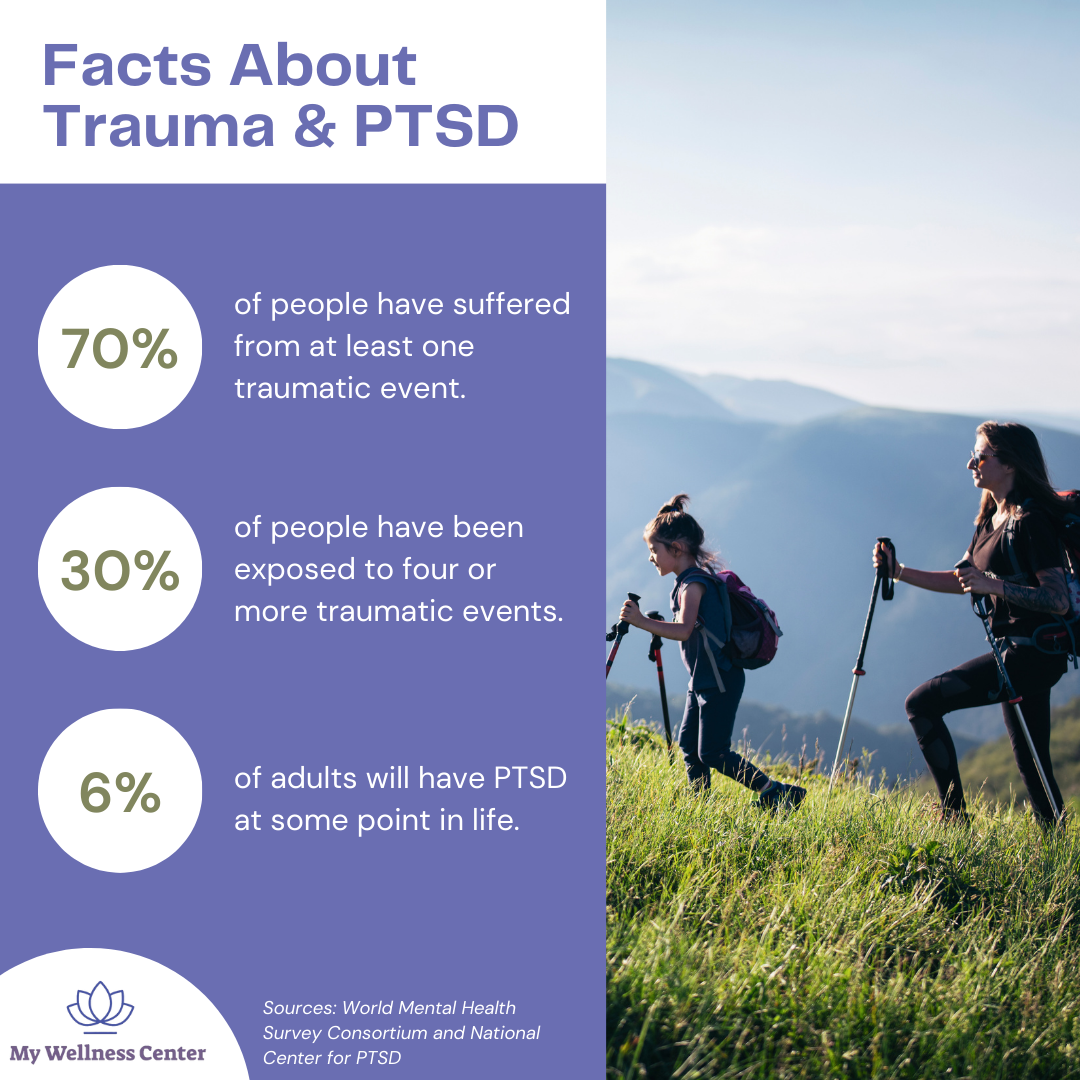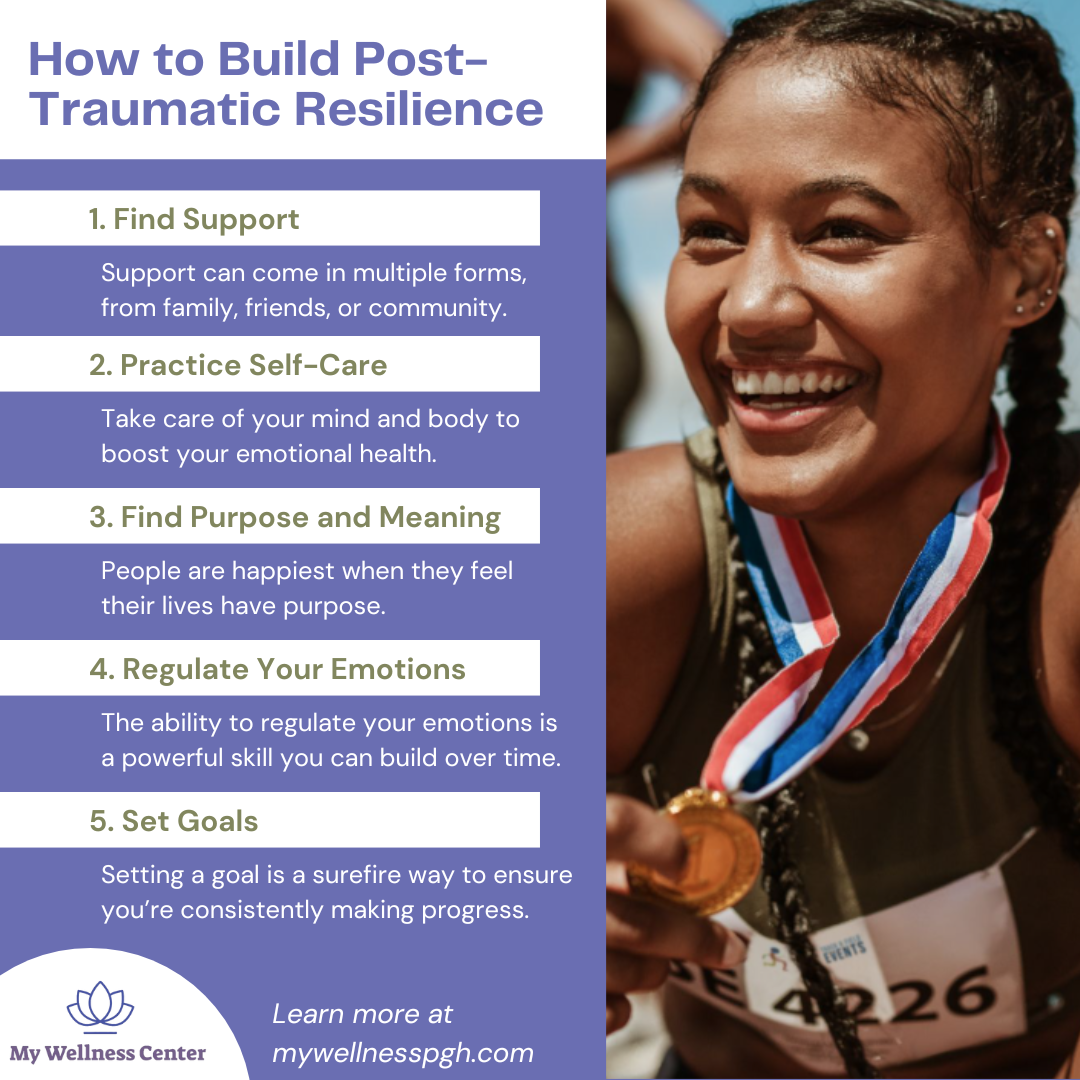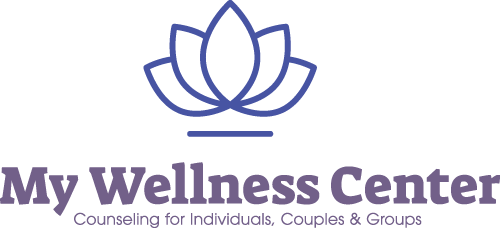Trauma is powerful. Although it may not always cause physical wounds, its emotional and mental scars can last for a lifetime.
Unfortunately, most people will experience trauma at some point in their lives. In fact, research shows:
- More than 70% of people have suffered from at least one traumatic event. (Source: World Mental Health Survey Consortium)
- 30.5% of people have been exposed to four or more traumatic events. (Source: World Mental Health Survey Consortium)
- 6% of adults will have PTSD at some point in life. (Source: National Center for PTSD)

Trauma—and its resulting emotions, like grief—have the potential to become long-time afflictions, especially when they turn into Complex PTSD. Hollywood actor Keanu Reeves is well known for the loss of loved ones early in his life, and he once famously offered this perspective:
“Grief changes shape, but it never ends.”
Resilience can help. By remaining resilient in the face of trauma, you can take control of your future no matter what happened in your past, and regardless of whether your trauma is acute or chronic. Use our table of contents to get started!
Table of Contents
What Is Post-Traumatic Resilience?
Post-Traumatic Resilience Vs. Post-Traumatic Growth
The 5 Cs of Resilience
How to Build Post-Traumatic Resilience
Final Thoughts On Post-Traumatic Resilience
Therapy for Post-Traumatic Resilience
What Is Post-Traumatic Resilience?
Post-traumatic resilience is someone’s ability to move forward into the future, despite the challenges they’ve faced in the past.
And that’s not always easy. Trauma has the ability to disrupt life, dominating our thoughts, feelings, and emotions, and even interfering with relationships, work, hobbies, and other activities.
Post-traumatic resilience is finding an appreciation for life regardless of what’s happened in the past. With resilience, someone is motivated to create meaningful change—and they’re willing to put in the work to make that change happen.
Post-Traumatic Resilience Vs. Post-Traumatic Growth
Post-traumatic resilience and post-traumatic growth are often used interchangeably, but they’re actually slightly different.
Post-traumatic resilience, as we discussed earlier, is the capacity someone has to remain strong in the aftermath of their trauma. It is the ability to combine connection, communication, confidence, control, competence, and commitment to better health.
Post-traumatic growth, however, is the idea that people can continue to experience personal growth after a traumatic experience. Some psychologists even use the term post-traumatic growth to encapsulate the theory that people who experience intense psychological struggles after a traumatic experience often see positive growth afterward.
And it’s true: We occasionally see individuals who use their trauma or PTSD as motivation to work toward something greater than their present situation.
To put it more simply, post-traumatic resilience is someone’s capacity for change, and post-traumatic growth is a scientific theory about that capacity for change.
The 5 Cs of Resilience
Resilience is often broken into five unique categories that contribute to success in the face of trauma. Those categories are:
1. Connection
Everyone needs a sense of belonging and community for strong mental health. Good connections include strong relationships with friends and family that make you feel loved, secure, and valued within the larger community—which can include work, school, faith groups, volunteering, and other avenues of connecting with others.
2. Communication
Communication is the ability to share, explore, and understand the trauma that occurred, the events that led up to it, and the aftermath you’ve had to experience since it happened.
While this communication can be verbal, it also includes journaling and meditation—other strategies for organizing your thoughts and experiences.
3. Confidence
Confidence is the belief that you can influence the course of your life, regardless of your negative experiences. It encapsulates your ability to visualize your goals and wants, as well as the pathway for attaining those desires.
4. Control
In the context of resilience, control is your ability to:
- Develop and use coping skills to deal with trauma
- Understand how your thoughts influence your decisions and emotions
- Manage strong, positive relationships
The greater your control, the better your mental health!
5. Competence & Commitment
Competence and commitment are the ability to problem-solve while exploring the bigger picture—both your life and the larger community that surrounds it.
They are also the ability and drive to continue working toward your goals on a daily basis, regardless of the challenges that pop up along the way.
How to Build Post-Traumatic Resilience
While the 5 Cs of post-traumatic resilience are important, they’re not a direct pathway toward better living. Instead, follow these recommendations to develop your own internal resilience and overcome the challenges of your past:

1. Find Support
Support can come in many forms. It can be the quiet listening of a friend. It can be the encouraging thoughts of a trauma support group. It can be traditional trauma therapy sessions or even EMDR therapy sessions, which rewire your brain to reframe the way you process past traumas.
Regardless of what you choose, the important thing is to have a support system in place that helps you feel safe, understood, and encouraged.
2. Practice Self-Care
Depression and anxiety can hold you back after a traumatic experience, and it’s common for individuals to slip into bad habits—like skipping hygiene steps, eating fast food, or coping with drugs and alcohol.
Instead, put in the effort to:
- Exercise regularly
- Eat healthy, nutritious meals
- Bathe and brush your teeth regularly
- Get enough sleep
- Socialize with family and friends
Focus on self-care from all fronts to feel mentally, emotionally, and physically recharged.
3. Find Purpose And Meaning
Purpose and meaning can come from a variety of sources.
It can come from a spiritual source, by engaging in your faith community. It can come from volunteer work, by engaging with a nonprofit you believe it. It can come from work or extracurricular activities, especially those that make you feel inspired.
Regardless, it’s important to find something that gives purpose to your day and your life overall, especially if you’re working toward something bigger—like starting a family, earning a promotion, or beginning a business.
4. Develop Emotional Regulation
Emotional regulation is the ability to identify and control your emotions even in intense situations.
After experiencing trauma, it’s normal to feel waves of sadness, grief, anger, or similar intense emotions, but emotional regulation is a skill that allows you to work through those emotions to get back to your own baseline.
5. Set Goals And Be Open to New Challenges and Possibilities
Building post-traumatic resilience is challenging. It pushes you into new, uncomfortable situations, and it focuses you to become a better, stronger person.
Setting goals and being open to the challenges of long-term trauma sets you up for long-term success, as it forces you to focus on a life beyond the trauma you feel right now.
Final Thoughts On Post-Traumatic Resilience
Resilience isn’t about surviving. It’s about living. It’s about becoming the best version of yourself so you can live life fully in your relationships and community to achieve the goals and dreams you’ve placed before yourself.
Developing resilience is a long-term process. While you can develop resilience over time, you must first heal from your trauma to uncover opportunities for growth.
Therapy for Post-Traumatic Resilience
Therapy is critical to post-traumatic resilience. Through therapy, one can overcome the traumas and even PTSD that has crippled growth—while developing new skills that empower new emotional development.
We can help. At My Wellness Center, we have a large team of therapists who specialize in trauma and PTSD, giving you a new chance at a rich, fulfilling life.
Contact us for a free consultation!

